All products featured are independently chosen by us. However, SoundGuys may receive a commission on orders placed through its retail links. See our ethics statement.
Apple AirPods Max vs Bose Noise Canceling Headphones 700
November 29, 2023

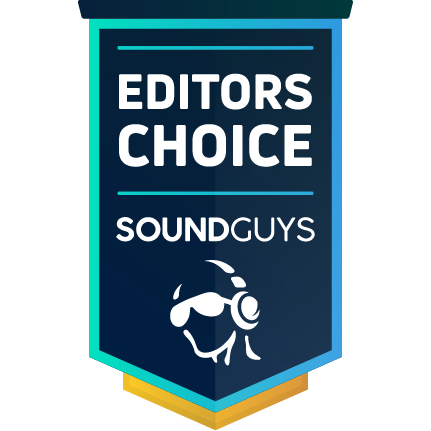
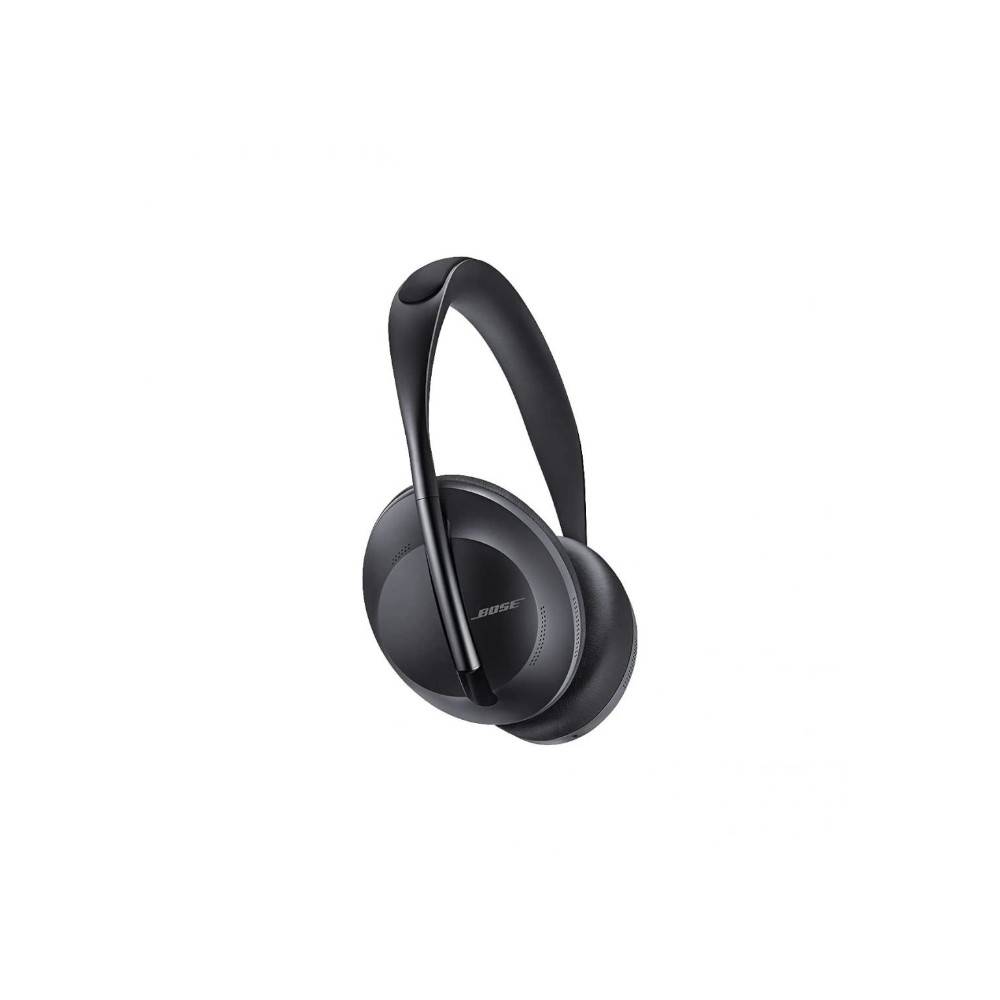
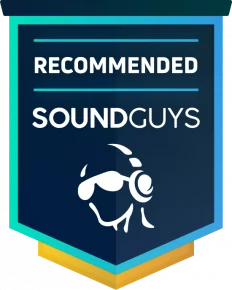
The Apple AirPods Max made waves in the consumer audio world, not because they’re groundbreaking, but due to their price. Consumers expect pricey products from Apple; however, the company may have pushed the envelope too far with its $549 headphones. We’re pitting the Apple AirPods Max against the Bose Noise Canceling Headphones 700 (NCH 700) to see which top-notch headphones are worth your while.
What's new?
- Bose has since replaced the Noise Canceling 700 Headphones with the QuietComfort Ultra Headphones. To find out how those compare to the Apple AirPods Max, see our versus article.
Editor’s note: this article was updated on November 29, 2023, to include direct comparison charts, standardized microphone demos, and a Controls section. We also updated the formatting and Alternatives section to ensure all information is current.
Apple AirPods Max vs Bose Noise Canceling Headphones 700: Which headphones have the best design?
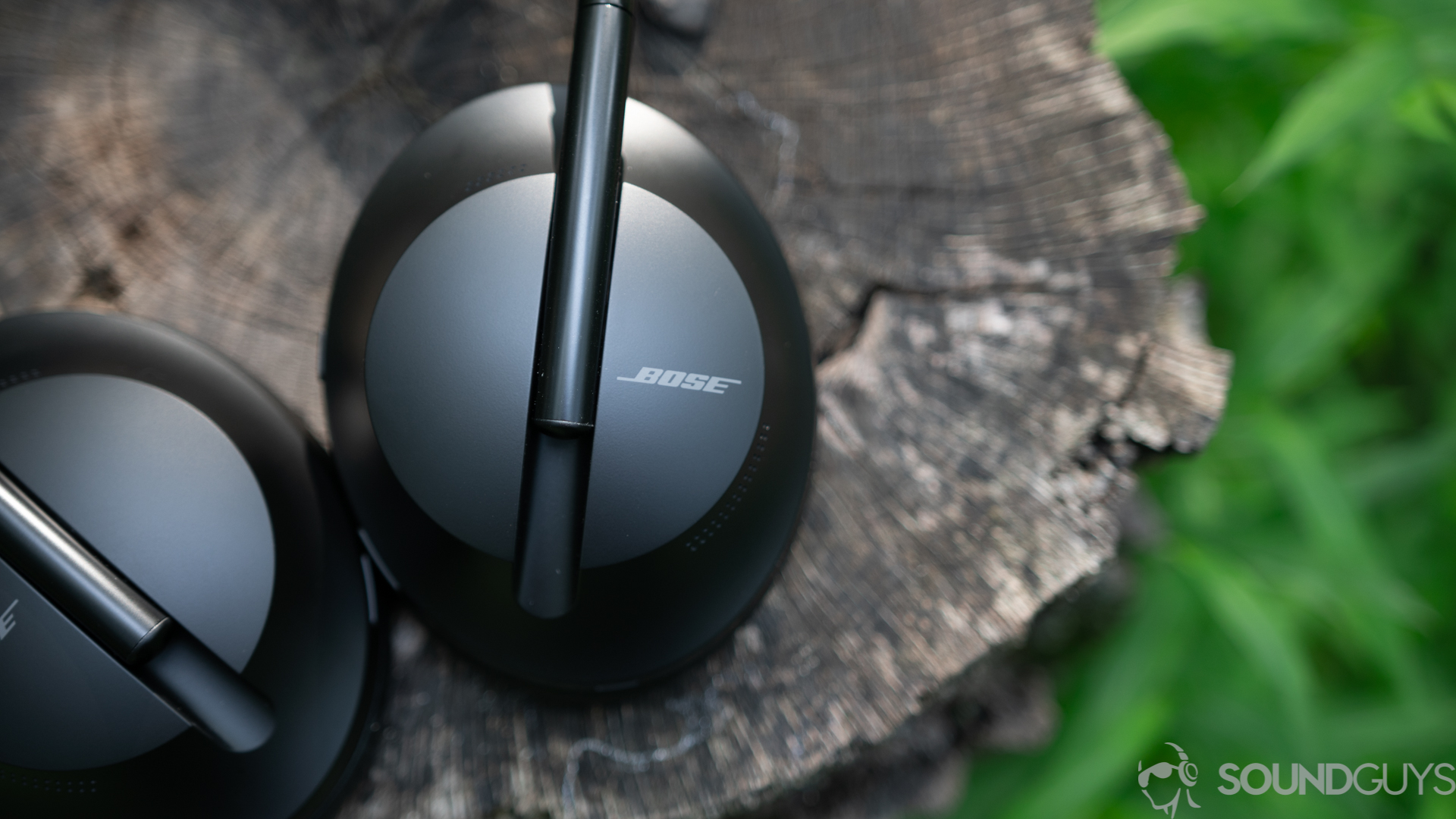
Both the Apple AirPods Max and Bose Noise Canceling Headphones 700 feature over-ear designs. Bespectacled listeners can listen for hours with either set of cans. The AirPods Max ear pads are plusher, and the Bose NCH 700 are significantly lighter (254g compared to 384g).
| Bluetooth Codecs | Wired connection | Battery life (ANC) | Controls | Software | Weight | Charge port | |
|---|---|---|---|---|---|---|---|
Apple AirPods Max | Bluetooth Codecs SBC, AAC | Wired connection Yes (requires special cable, or adapter) | Battery life (ANC) 20 hours | Controls Tactile, and automatic ear detection sensors | Software iOS | Weight 384g | Charge port Lightning |
Bose Noise Canceling Headphones 700 | Bluetooth Codecs SBC, AAC | Wired connection Yes | Battery life (ANC) 21 hours, 25 minutes | Controls Touch | Software iOS and Android | Weight 254g | Charge port USB-C |
Apple and Bose’s flagship headphones share futuristic, minimal designs with metal components. Neither Apple nor Bose engineered foldable hinges with their headphones, making travel cumbersome. Bose’s included carrying case is much more protective than the Apple Smart Case, which is required to power off the AirPods Max.
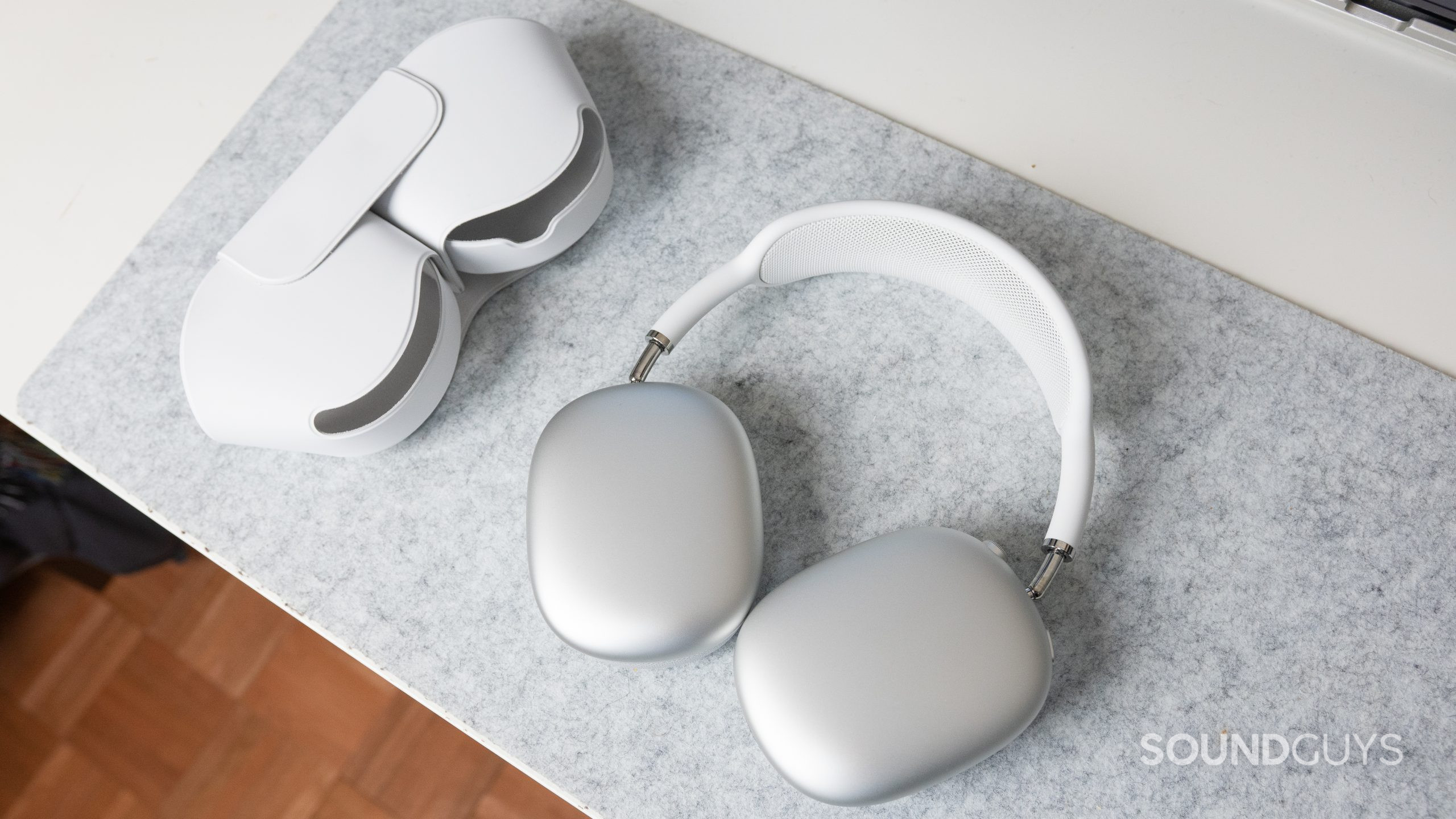
Bose’s zippered case fully protects the headset, while the AirPods Max Smart Case leaves the mesh headband exposed and vulnerable to rogue pens or keys whenever you carelessly plop the headphones into your backpack. You can always buy a third-party case for either headset, but you shouldn’t have to shell out more money for a sturdy case when paying top dollar.
Is it easier to control the AirPods Max or Bose Noise Canceling Headphones 700?
| Action | Right headphone |
|---|---|
Two taps | Play/pause. Answer/end call. |
Hold | Decline incoming call |
Swipe forward/backward | Skip/previous track |
Swipe up/down | Increase/decrease volume |
Buttons | Power, voice assistant, noise control |
Customizable controls? | Yes, Bose Music app |
Bose’s headset gives you more control over your music than Apple’s. You can use the touch panels on the Bose Noise Canceling Headphone 700 to control playback, volume, and more. You can even create gesture shortcuts, which the AirPods Max doesn’t allow. In a surprise move, Apple’s AirPods Max use tactile controls exclusively. Rather than swiping on the large headphones, you must interact with the Digital Crown and Noise Control button.
| Action | Media controls | Call controls |
|---|---|---|
| Action Noise control button | Media controls Toggle ANC and Transparency mode | Call controls ✘ |
| Action Headset: remove/wear | Media controls Auto-pause/play | Call controls ✘ |
| Action Digital Crown: rotate | Media controls Adjust volume | Call controls ✘ |
| Action Digital Crown: one press | Media controls Play/pause | Call controls Answer/end call; answer incoming call and put current call on hold |
| Action Digital Crown: two presses | Media controls Skip track | Call controls Reject incoming call; answer incoming call and end current call |
| Action Digital Crown: three presses | Media controls Previous track | Call controls ✘ |
| Action Digital Crown: hold | Media controls ✘ | Call controls Reject second incoming call |
| Action Customizable controls? | Media controls Yes, ANC toggle only | Call controls No |
How do the AirPods Max and Bose Noise Canceling Headphones 700 connect?
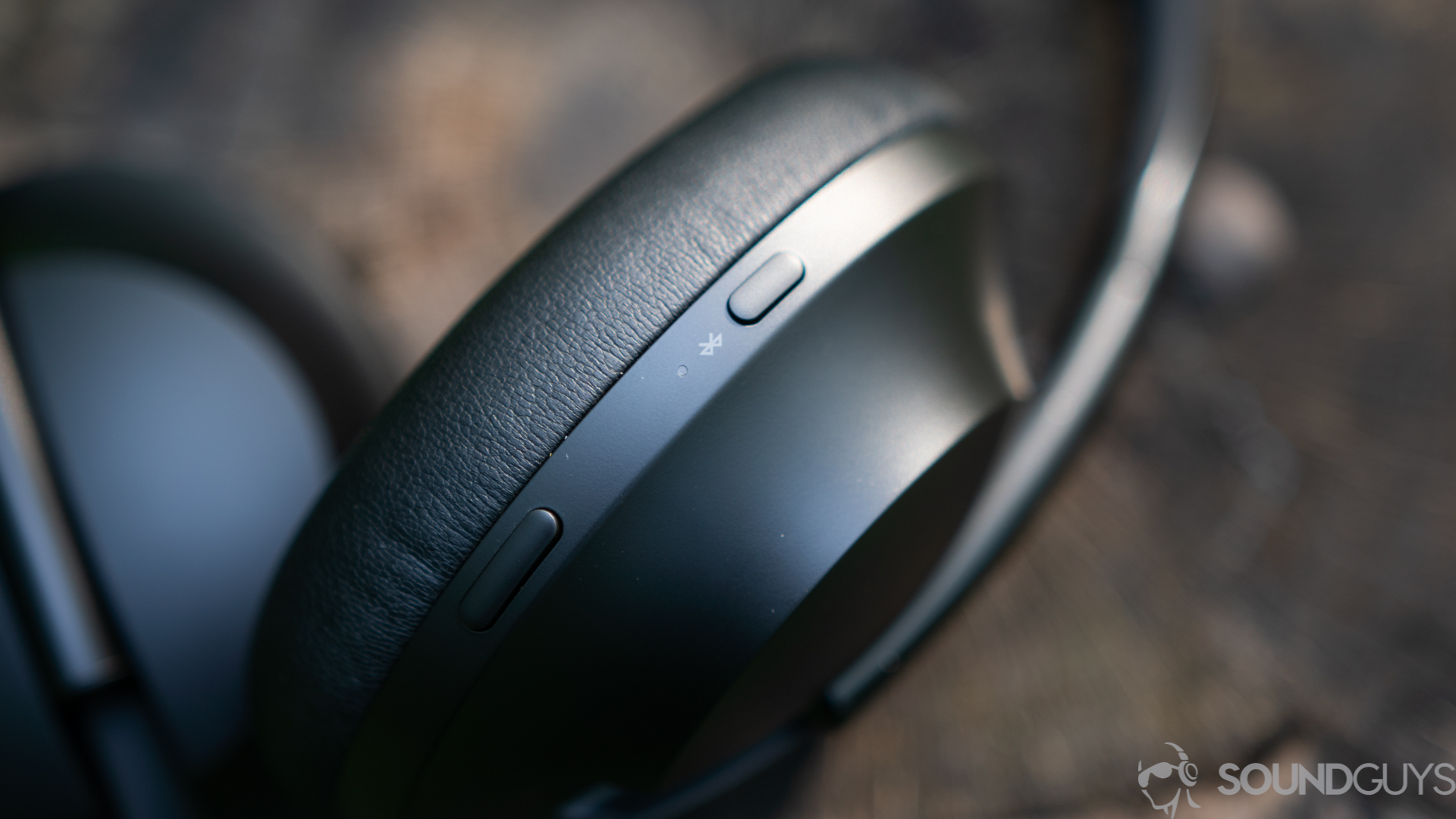
The Apple AirPods Max and Bose Noise Canceling Headphones 700 rely on Bluetooth 5.0 firmware and support two Bluetooth codecs: SBC and AAC. In either instance, only iPhone owners benefit from consistent, high-quality audio. Android historically has trouble encoding the AAC codec depending on the hardware.
Connection stability is fine with either headset, but only the Bose Noise Canceling Headphones 700 support Bluetooth multipoint, so you can connect it to two sources simultaneously. The AirPods Max don’t support multipoint and instead have automatic source switching between compatible iOS devices.
Do the Bose Noise Canceling Headphones 700 have better app features than the AirPods Max?
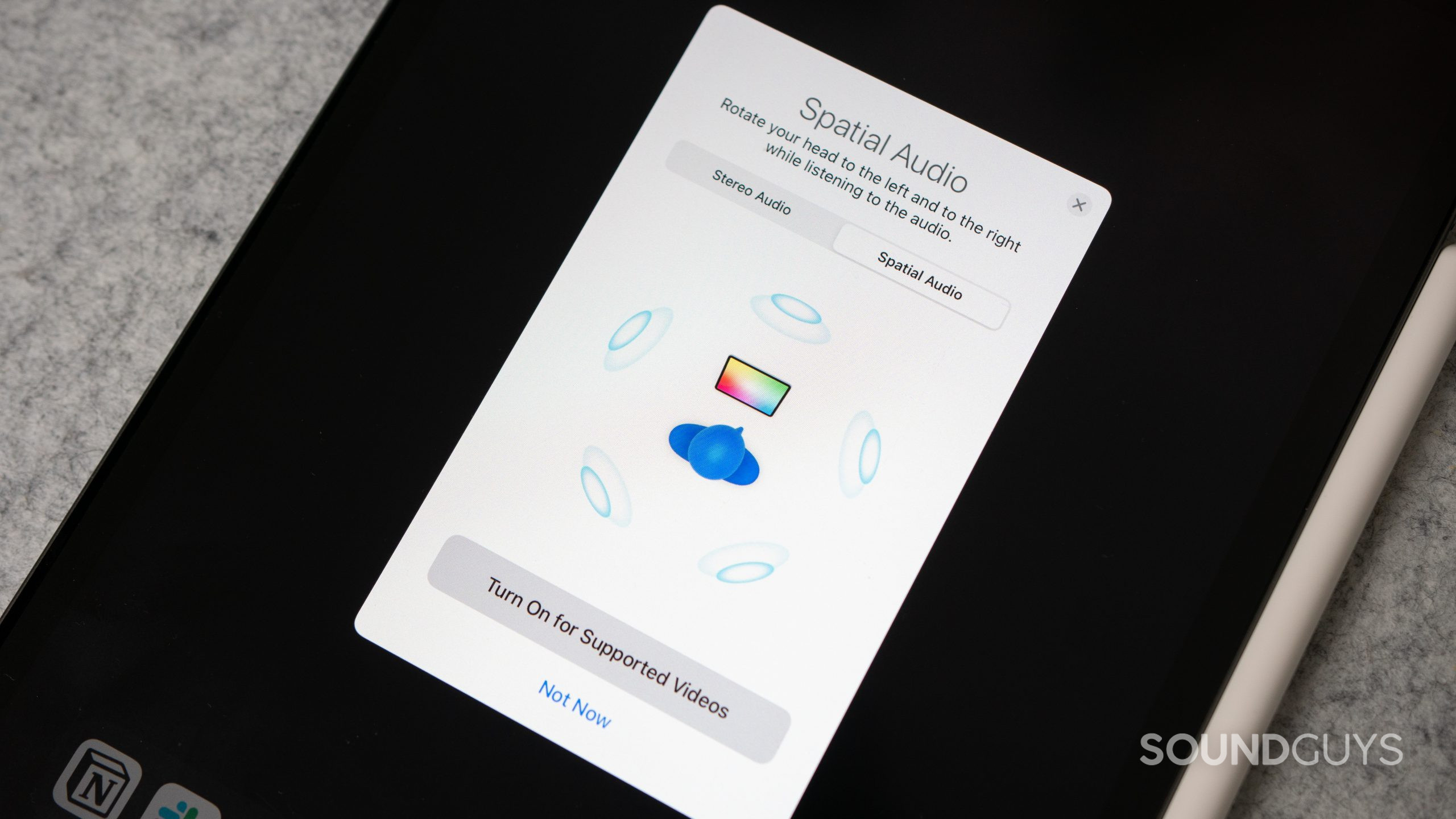
The Apple AirPods Max works best with Apple devices, specifically iOS and iPadOS devices. You access all features through the iOS or iPadOS Settings app. When paired with an iPhone, the AirPods Max gets features like “Hey Siri,” Adaptive EQ, some control customization, and Spatial Audio with head tracking. You can’t create a custom EQ profile, even with an iPhone.
If you want to update your AirPods Max firmware, you’ll need an Apple device. These really aren’t the headphones for Android users.
The Bose NCH 700 works on iPhone and Android, but the AirPods Max features are limited to Apple devices.
The Bose Music app is available on the Apple App Store and Google Play Store and operates uniformly on either system. You can use the Bose Music app to adjust noise canceling intensity, remap the multifunction button, and create a custom EQ profile. If you don’t care to tinker, you can always fall back on Active EQ.

Bose’s headphone app also serves as a one-stop shop for all your favorite music streaming services, which reduces the need to swipe through designated radio and music apps. It’s a hub for your Bose smart speakers and soundbars, too. You can control multi-room playback, group speakers together, or listen to different playlists in different rooms.
The Bose Music app is also an access point for Bose AR, the company’s augmented reality platform that combines its audio peripherals with AR apps. You can use Bose AR through apps like Navisens NaviGuide AR, which provides audio-enhanced directions.
How does the AirPods Max battery compare to the Bose Noise Canceling Headphones 700?
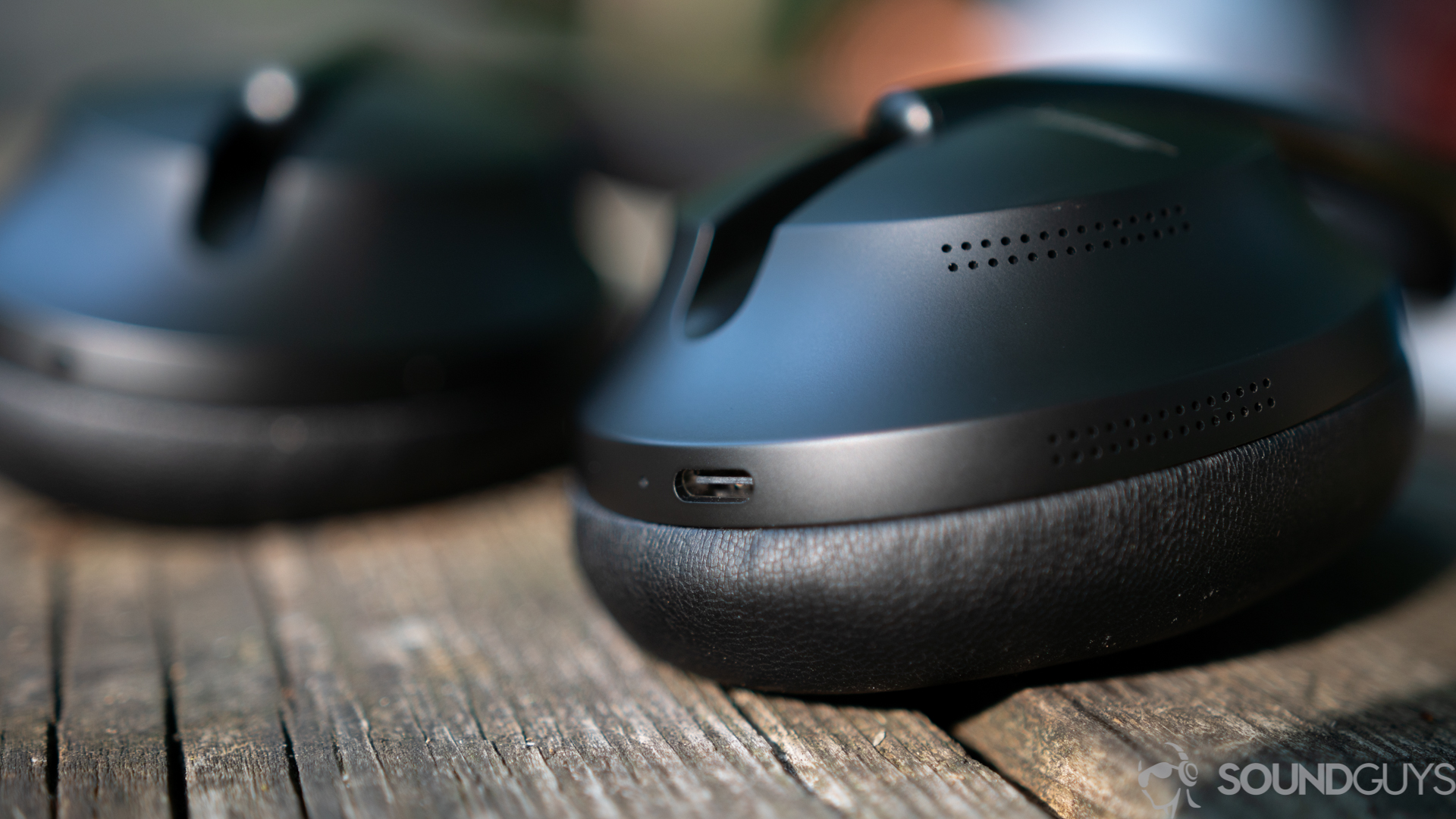
The Apple AirPods Max lasts 20 hours on a single charge with ANC enabled, while the Bose Noise Canceling Headphones 700 last 21 hours and 25 minutes. We test battery life by subjecting each headset to a constant output, peaking at 75dB(SPL) until their respective batteries deplete.
Both headphones support quick charging: connecting the Lightning cable to the AirPods Max for five minutes yields 90 minutes of playback. Doing the same over USB-C with the Bose Headphones 700 for 15 minutes yields 210 minutes of playback.
Does the Apple AirPods Max have better noise canceling than the Bose Noise Canceling Headphones 700?
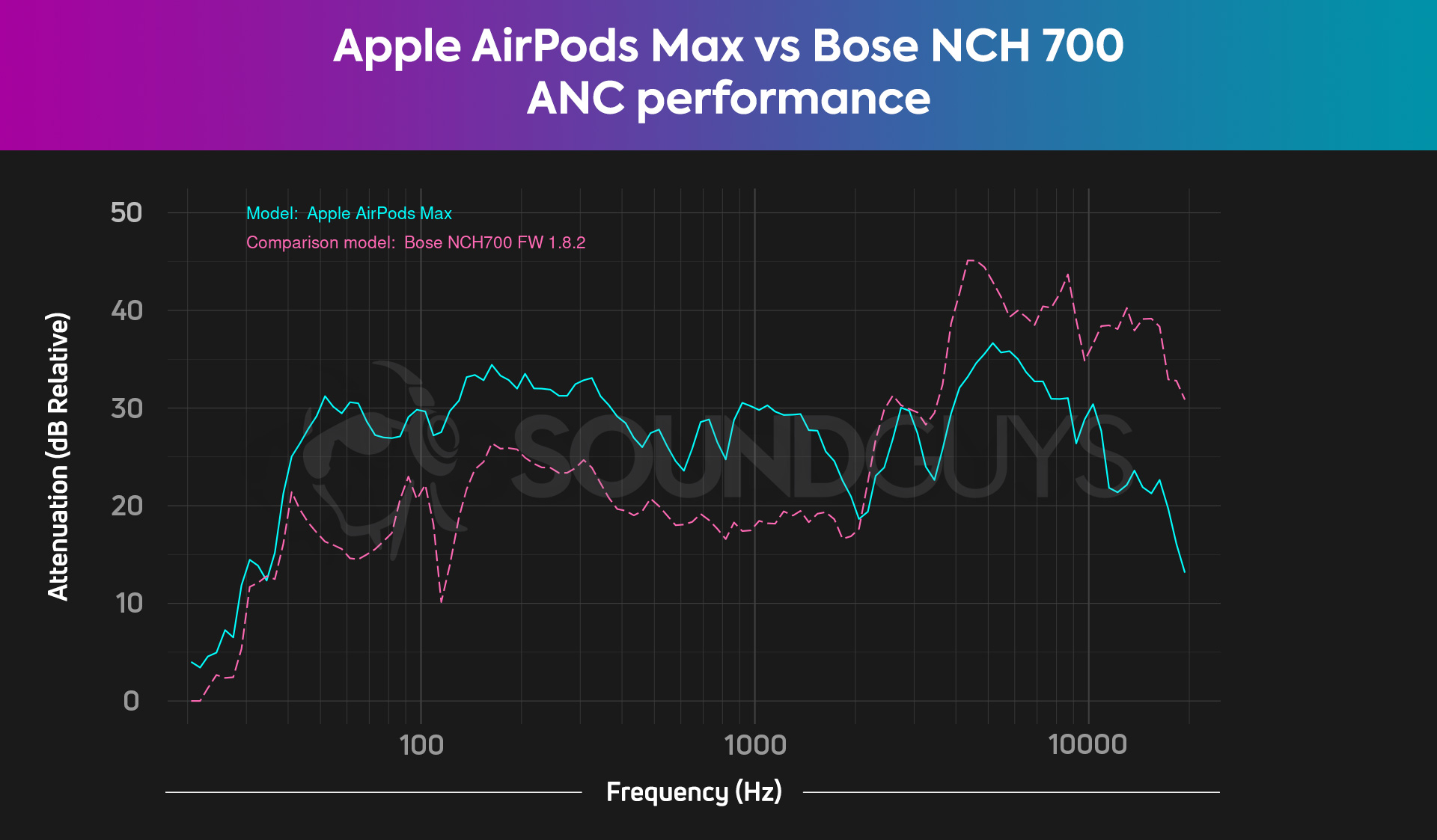
Bose might have introduced active noise canceling (ANC) to the world, but the AirPods Max have better ANC than the Bose Noise Canceling Headphones 700.
The AirPods Max ANC nullifies background noise much more effectively than the Bose Headphones 700, rendering some midrange frequencies up to four times quieter. The AirPods Max also quiet low-frequency sounds more effectively than Bose’s cans. This frequency range is where you hear sounds like an airplane engine or the droning grind of the train during your commute.
Both headphones have good noise canceling, but Apple takes the cake here. Apple’s stellar ANC performance is because each headphone houses an H1 chip, Apple’s proprietary processor, which powers tasks like ANC. Apple’s headset also uses eight mics for its ANC, while only six of the eight mics in Bose’s headset are dedicated to ANC processing.
Bose vs Apple: Which headphones sound better?
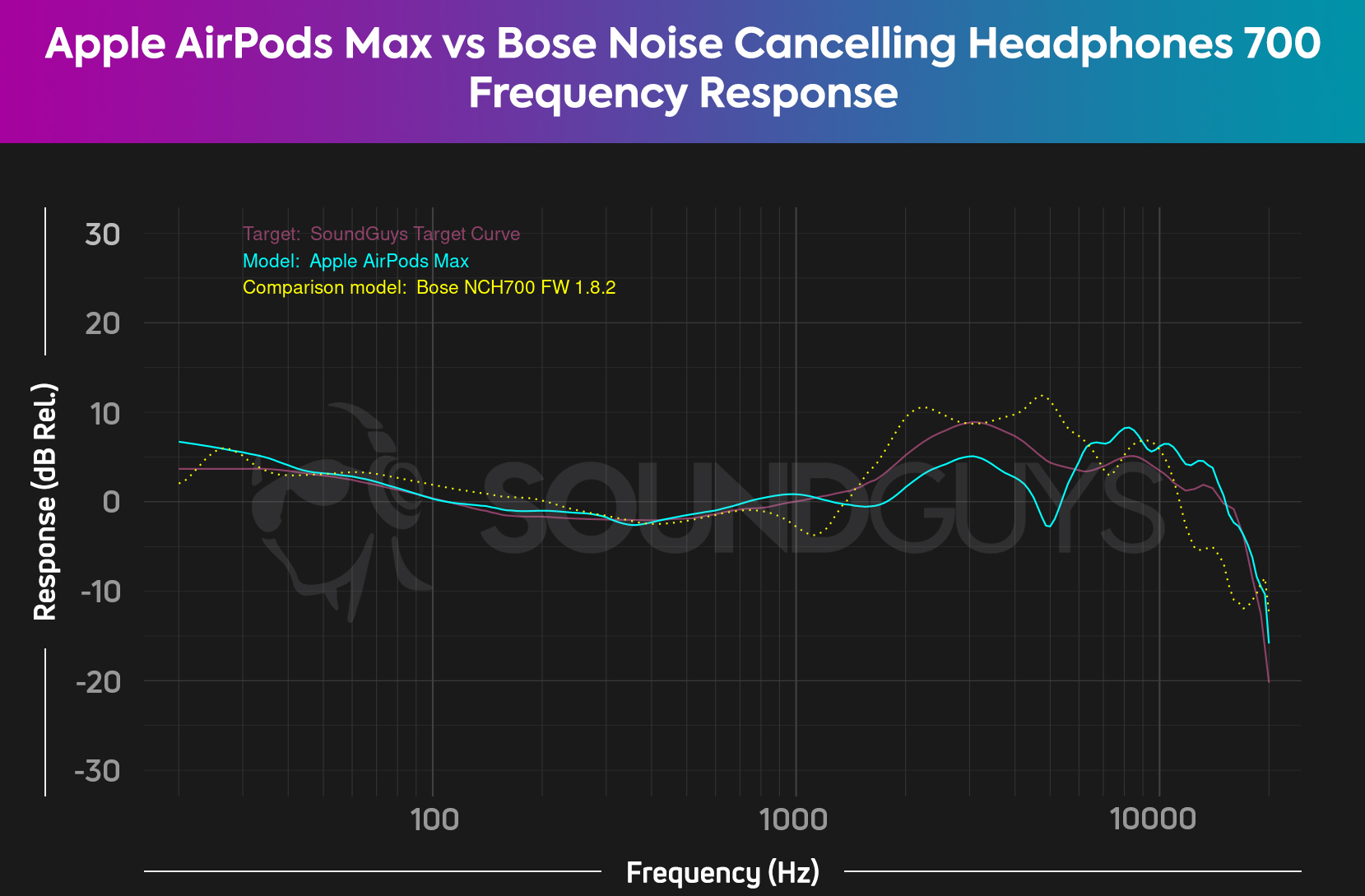
The AirPods Max and Bose Noise Canceling Headphones 700 sound great. Music of all genres will come through clearly with either pair of headphones. By our objective measures, the Apple AirPods Max and Bose NCH 700 have similar frequency responses until about 1,000Hz. Here, the AirPods Max boosts the response, while the NCH 700 under-emphasizes it. This means you may have an easier time hearing cymbal hits and harmonic detail from Bose’s headphones than Apple’s.
With Bose’s headphones, you can EQ the sound in the Music app, which you can’t do with any AirPods. You can’t go wrong with either headset’s sound quality, but if we’re splitting hairs, the Bose NCH 700 scored a bit higher in our objective measurements than the AirPods Max.
Is the Bose Noise Canceling Headphones 700 microphone better than the AirPods Max?
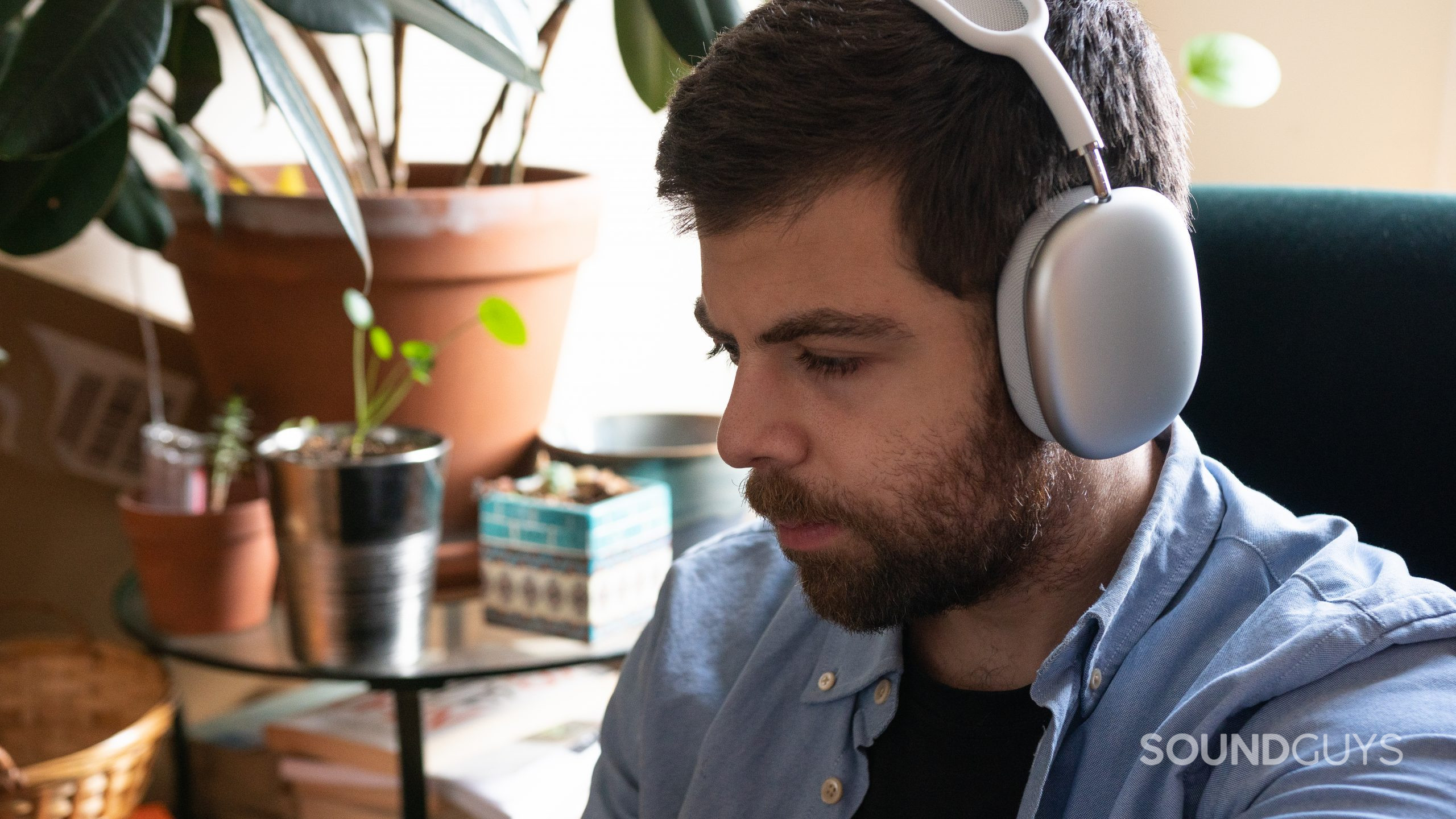
Apple and Bose have advanced microphone arrays jammed into their particular headsets. The AirPods Max reserves three microphones for voice pickup, two of which are shared with ANC. The Bose Headphones 700 has four microphones for voice pickup, two of which are also shared with ANC.
Either headset is great for personal use and perfectly fine for conference calls, but voice quality depends on your source device. Listen to our demos below and let us know your thoughts.
Apple AirPods Max microphone demo (Ideal conditions):
Apple AirPods Max microphone demo (Office conditions):
Bose Noise Canceling Headphones 700 microphone demo (Ideal conditions):
Bose Noise Canceling Headphones 700 microphone demo (Office conditions):
Which microphone do you think sound better?
Apple AirPods Max vs Bose Noise Canceling Headphones 700: Which should you buy?
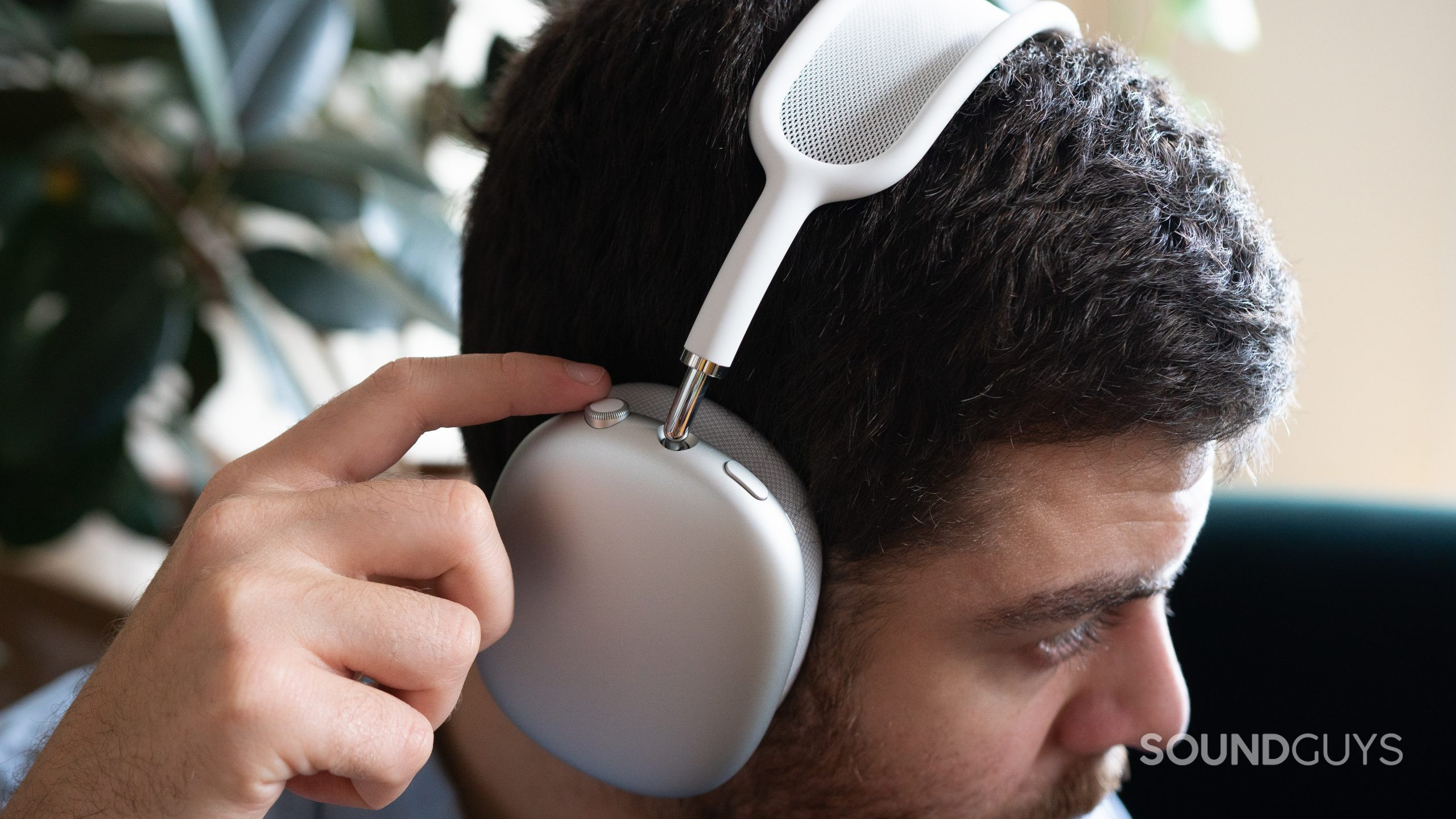
Unless you have an iPhone and a flexible budget, the Bose Noise Canceling Headphones 700 are a better buy. Bose’s headphones support important, simple features like a custom EQ module and configurable controls. We also like how they work on iOS and Android; no features are limited to a single operating system.


Now, the AirPods Max are very good noise canceling headphones. Really, they’re nothing shy of excellent: noise canceling performance is the best around, bar none, and the headphones sound great. But all of those features come at a cost, and one very few consumers can afford, or at least justify. Apple makes beautiful, reliable hardware and integrates all of its products into its ecosystem. Still, even the convenience of the AirPods Max may be hard for the most ardent Apple fan to swallow.


What should you get instead of the AirPods Max and Bose Headphones 700?
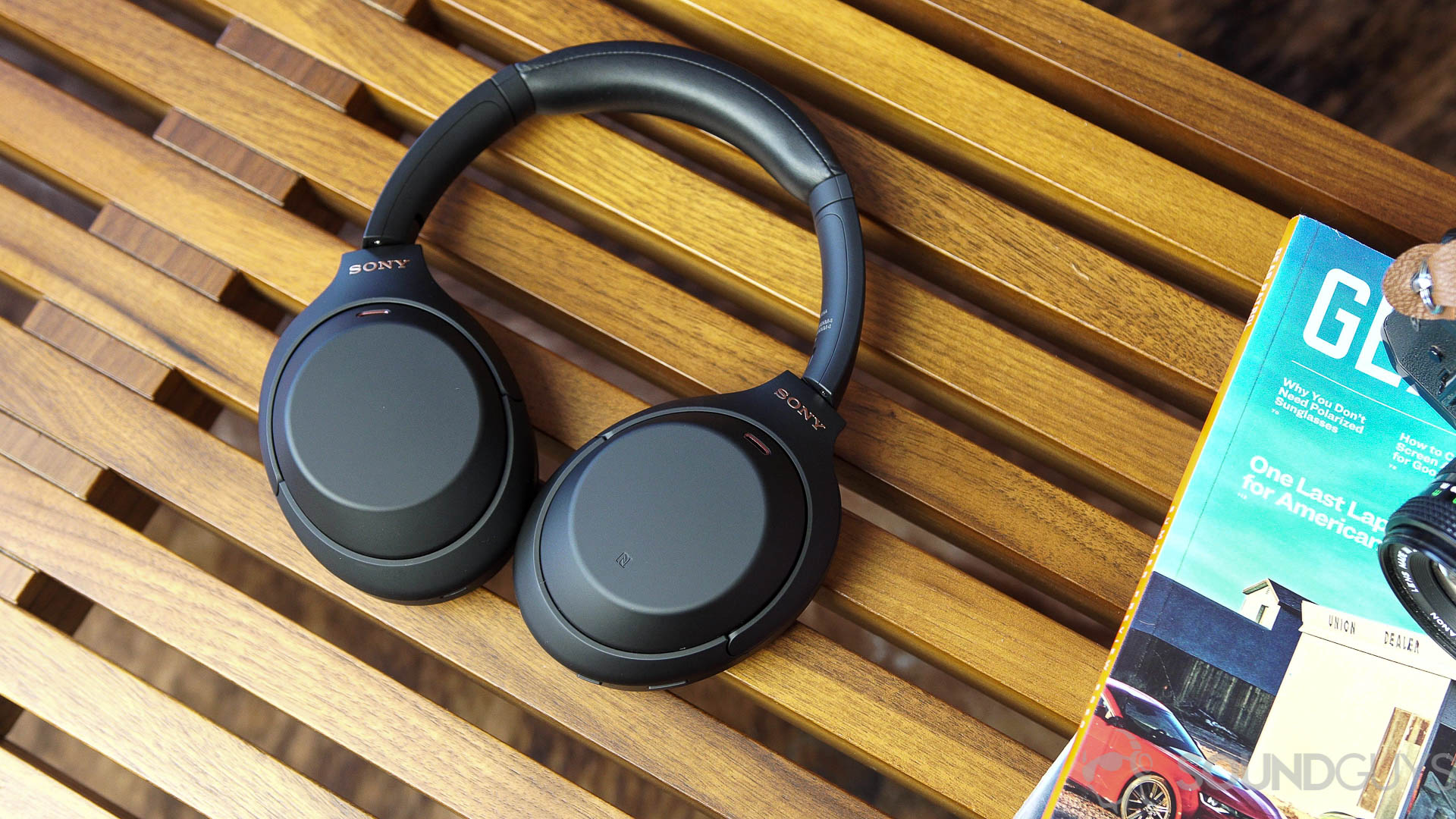
For the best of the best noise canceling headphones, the Sony WH-1000XM5 ($387 at Amazon) is where it’s at. These have amazing ANC, great sound quality, and an in-app equalizer. The microphone quality is outstanding for sub-optimal conditions. an outstanding microphone. Their predecessor, the Sony WH-1000XM4 ($278 at Amazon), shares similar features with an older design.
If you aren’t satisfied with either pair of noise canceling headphones, you’re in luck: we’re in the middle of ANC audio’s heyday. The next obvious option is the Bose QuietComfort 45 ($279 at Amazon), which does well against the Sony WH-1000XM4 headset.
You have other brands to consider, like the Sennheiser MOMENTUM 4 Wireless ($289.23 at Amazon), which sounds great sound quality and a whopping 56-hour battery life.
Frequently asked questions about the AirPods Max and Bose NCH 700
Both headsets support wired audio playback, which should be good news if your library is full of FLAC files, or you subscribe to a service like Tidal HiFi or Amazon Music HD. Bose integrated a 2.5mm stereo input socket on its headset, which means you’ll really need to hang onto the included cord for wired use. However, Apple’s headphones force you to use a $35 Lightning-to-3.5mm audio cable and a $9 audio dongle if your smartphone doesn’t have a headphone jack. Unfortunately, there’s no way to send digital audio directly to the AirPods Max over a cable, even though the cables exist.
It’s much easier to connect the AirPods Max to your iPhone than it is to connect the Bose Noise Canceling Headphones 700 to an iPhone, though even that is a simple process. When you first power on the AirPods Max near your iPhone, a pop-up notification will ask permission to connect the headset. That’s all it takes. Connecting the Bose Headphones 700 to an iPhone or Android smartphone is a bit more involved and requires navigating through the device’s Bluetooth menu.
No, none of the Apple AirPods support Bluetooth multipoint. However, you can use automatic device switching between Apple hardware under the same iCloud account. This means when you’re listening to music on your iPhone and playing a video on your MacBook, the AirPods (3rd generation) will stop playing from your phone and immediately switch to the laptop’s audio output.